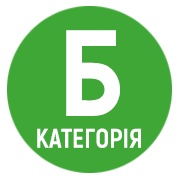ASSOCIATIVE FIELD OF THE CONCEPT MONEY: SLOVAK LINGUISTIC PICTURE OF THE WORLD
DOI:
https://doi.org/10.32689/maup.philol.2025.1.5Keywords:
associative experiment, concept, cognitive linguistics, linguistic worldview, Slovak languageAbstract
The article is devoted to the study of the concept of MONEY in the Slovak language on the basis of an associative experiment. The article analyses the meaning, emotional and cultural connotations associated with this concept in the minds of Slovak speakers. The peculiarities of the formation of the associative field of the concept MONEY through the prism of the Slovak linguistic picture of the world of young people are considered, the main semantic groups of associations, their frequency and connection with socio-cultural realities are determined. The relevance of studying the concept of MONEY is due to its key role in society and its impact on economic, social, cultural and psychological processes. Money is not only a means of exchange and an economic instrument, but also an important cognitive phenomenon that shapes people's values, behaviour and worldview. The purpose of the article is to study the linguistic associations related to the concept of MONEY in the minds of Slovak youth and to identify its cognitive, semantic and cultural features. The article is aimed at analysing the field of this concept by conducting an association experiment among native speakers of the Slovak language, which allowed us to determine which emotional, social and economic connotations prevail in the minds of Slovak-speaking respondents. The modelling of the structure of the MONEY concept shows that in the minds of Slovak youth, the information content plays a major role, based on the cognitive feature of livelihood. The figurative component is not extensive. The most extensive is the interpretive field. The most extensive and diverse is the utilitarian zone, which is closely related to the encyclopaedic zone, and the main feature for Slovaks is blahobyt/materiálna hodnota. Thus, the concept of MONEY in the minds of Slovak youth has predominantly positive connotations, is associated with wealth, prosperity, opportunities, and is closely linked to the understanding of the need to earn money. This demonstrates the pragmatic approach of young people to the financial sphere, where money is perceived not only as a means of achieving material comfort, but also as the result of personal effort and work.
References
Голубовська І. Сучасна українська лінгвоконцептологія: стан і перспективи розвитку. Актуальні проблеми філології та перекладознавства, 2016. № 10 (1). С. 151–159
Космеда Т. Система репрезентованих аксіологічно маркованих смислів: образ-концепт «Вода» (на матеріалі словника «Галицько-руські приповідки»). Одеський лінгвістичний вісник, 2013. Вип. 2. С. 59–72
Кушмар Л. Концепт «гроші» у картині світу студентів економічних спеціальностей. Наукові записки Центральноукраїнського державного педагогічного університету імені Володимира Винниченка. Серія : Філологічні науки, 2019. Вип. 175. С. 573–578.
Макаренко Н. Асоціативно-номінативний потенціал концепту «ГРОШІ» на матеріалі «Тригрошового роману» Б. Брехта. Тези доповідей всеукр. наук. конф. пам’яті д. філол. н., проф. Д. І. Квеселевича (1935–2003) «Сучасний стан і перспективи лінгвістичних досліджень та проблем перекладу» від 15 травня 2015. С. 113–116.
Панченко О. Концепт ГРОШІ в англійській та українській мовах. Науковий вісник Херсонського державного університету, 2019. Вип. 36. С. 81–84.
Плотнікова Н. Поняття «КОНЦЕПТОСФЕРА» та «КОНЦЕПТ» у сучасній лінгвістиці. Вчені записки ТНУ імені В. І. Вернадського. Серія: Філологія. Соціальні комунікації, 2020. Том 31 (70). № 1. Ч. 1. С. 91–96.
Полюжин М. Поняття, концепт та його структура. Науковий вісник Східноєвропейського національного університету імені Лесі Українки, 2015. № 4. С. 214–124.
Руснак К. С. Відображення концептуалізації грошей у номінативних одиницях валют (на матеріалі української преси початку ХХІ ст.). URL: https://ekhnuir.karazin.ua/server/api/core/bitstreams/ dbcf2202-6e6f-41d2-b999-768be6509e79/content
Семененко Л. Концепт “гроші” у драматичному творі Івана Карпенка-Карого «Сто тисяч». Літератури світу: поетика, ментальність і духовність, 2015. Вип. 5. С. 135–143.
Bednáriková M., Úvod do lingvistiky. Vysokoškolská učebnica.Vydavateľ Filozofická fakulta Trnavskej univerzity v Trnave. 2013. 85 s.
Krátky slovník slovenského jazyka [red. J. Kačala a kol.]. Bratislava : Veda. 2003. 985 s.
Sipko J. Nové trendy v kognitívnej lingvistike. URL: http:// www.unipo.sk;
Úvod do lekárskej terminológie. Nový pohľad na termín. 2013. 34 s. URL: http://www.datasolution.sk/ pdf.






